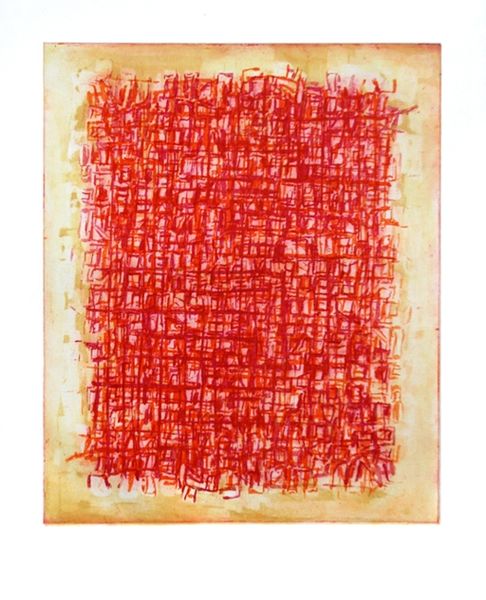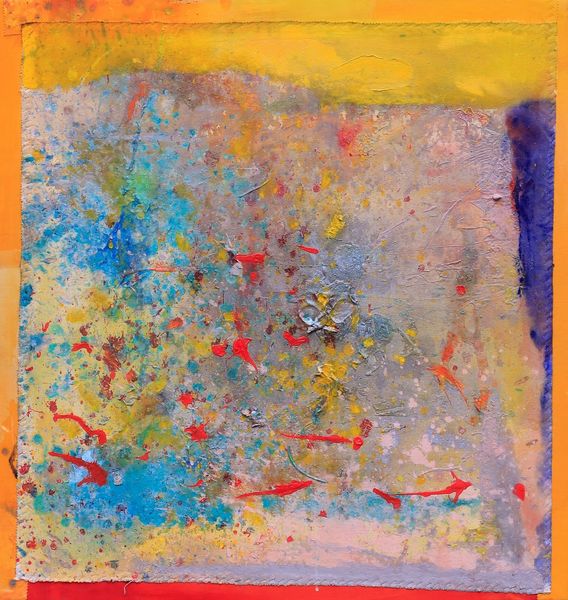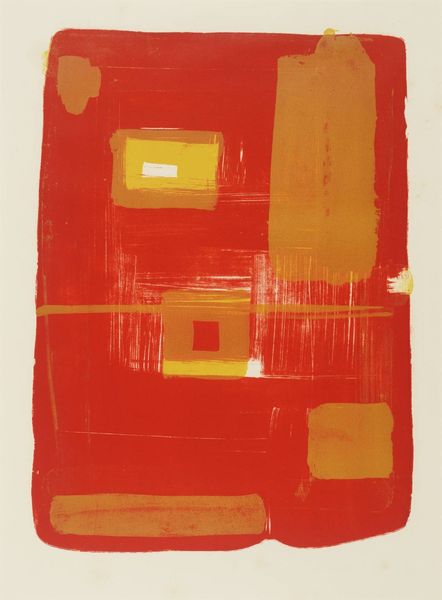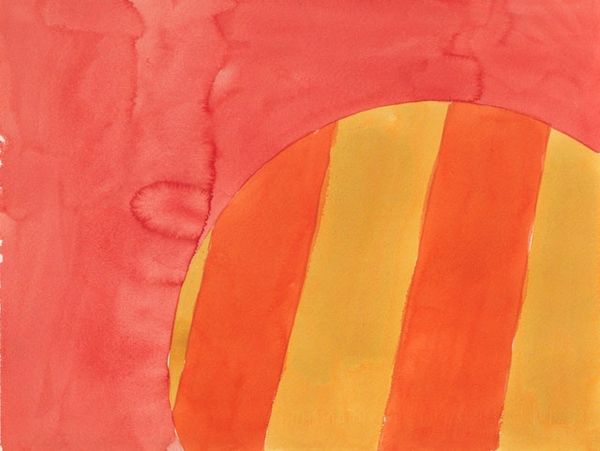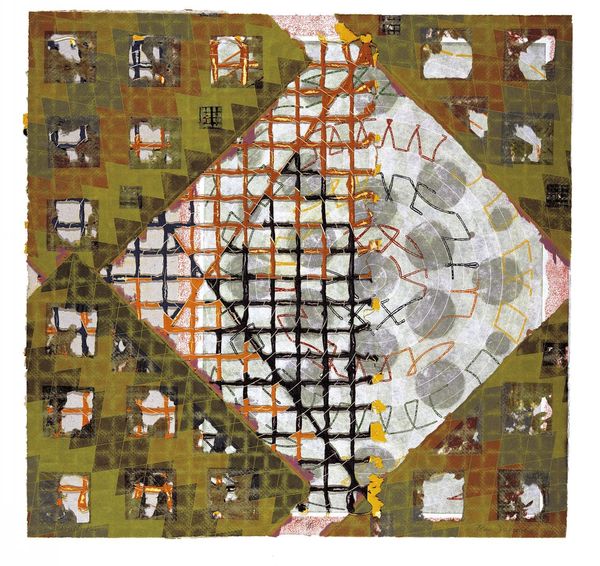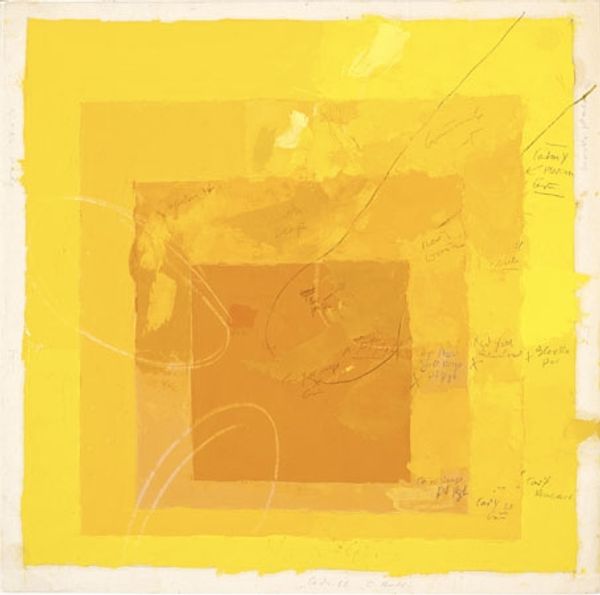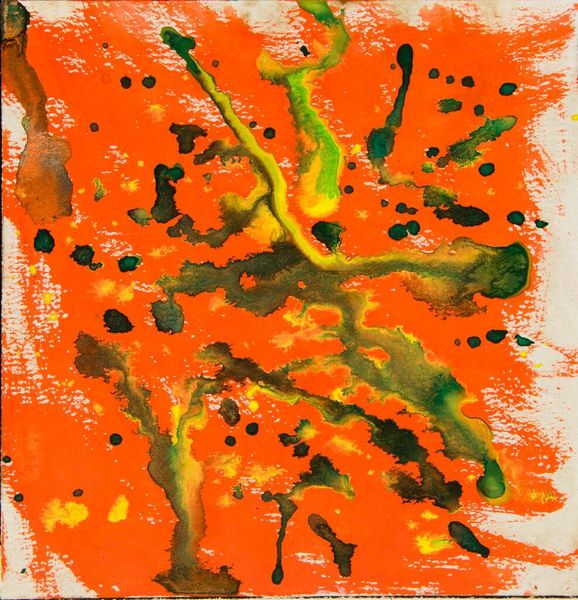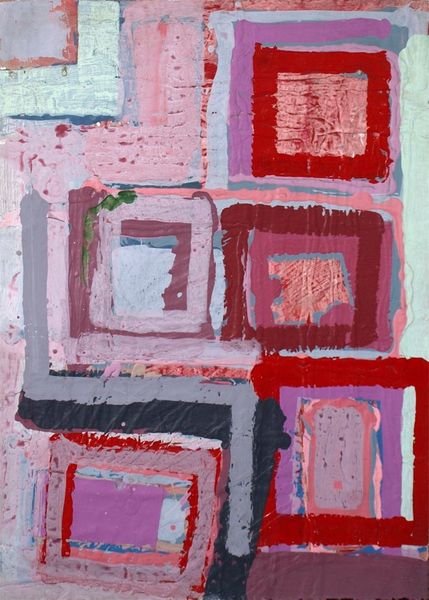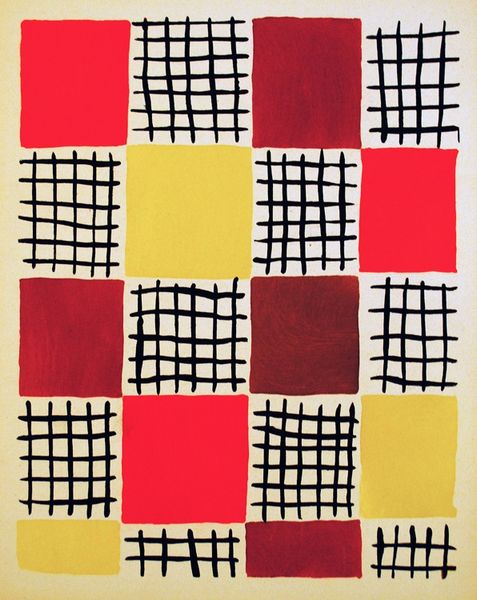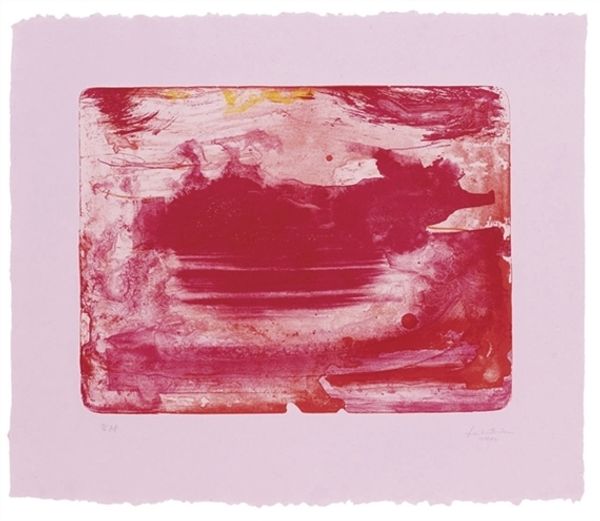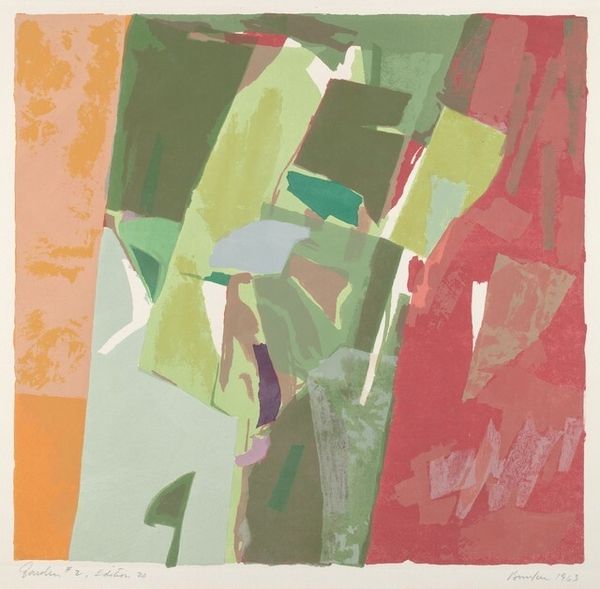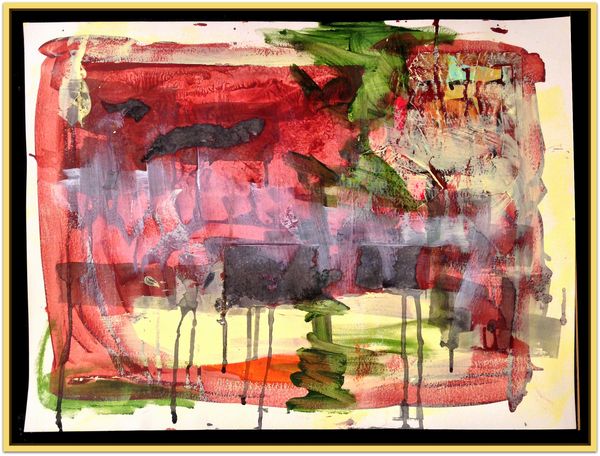
mixed-media, print
#
mixed-media
# print
#
geometric
#
abstraction
#
line
#
modernism
#
orange
Copyright: Roger Bissière,Fair Use
Curator: Here we have Roger Bissière's 1957 mixed-media print, "Green and Orange." Editor: It feels like a rusty, well-loved garden gate overlaid with a playful abstract map! It's buzzing with summer heat. What strikes me first is this chaotic grid, those little squares of colour feel alive against it. Curator: Precisely. The overall composition certainly operates through that tension, doesn't it? The underlying grid, barely visible in places, acts as a structural foundation, while the overlaid splashes of color and fractured lines disrupt any sense of rigid order. We observe a play between structure and spontaneity that complicates any facile reading of abstraction as pure chaos. Editor: I get that. It’s like he's built a framework to then completely undermine it. It makes me wonder if he felt that tension himself—like, was he wrestling with control and freedom, order and messiness, as he made this piece? Curator: That's a plausible reading. Semiotically, the orange might symbolize vitality and warmth, contrasted with the grounded nature of the green, yet both being bound within a structuring matrix, like concepts searching for an outlet. Editor: It feels incredibly human. It doesn't strike me as cold abstraction, and you know what I mean. Each of these gestures seems deliberate, even though the overall effect is so beautifully unrestrained. Like watching a child’s playful construction with building blocks, scattered on a map with the setting sun... it vibrates. Curator: I concede, and perhaps that very vibration, or rather, its mimetic representation, constitutes its Modernist essence. What seems like a child's act may carry coded information which resists a literal decoding... the tension we were speaking about at the beginning... Editor: That it does, with that being said, next artwork on display. Curator: Indeed. An appropriate continuation.
Comments
No comments
Be the first to comment and join the conversation on the ultimate creative platform.
